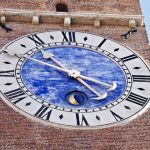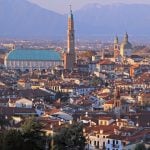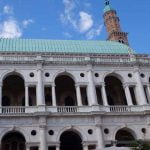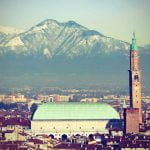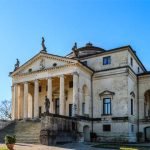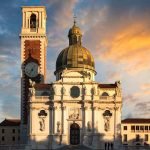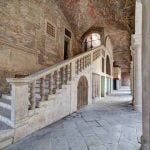In Northeastern Italy sits Vicenza, one of the most architecturally stunning cities in the country. A perfect addition to any Italian vacation itinerary, the city is a traveler favorite because of the grandiose feel and multiple UNESCO World Heritage Sites located here. Still, Vicenza is generally less crowded with tourists compared to many of its larger counterparts, which allows people to move about the city more freely. Whether you come seeking the rich culture, authentic cuisine, or ancient history of this gorgeous city, Vicenza is a fabulous destination for an Italian getaway.
Vicenza is home to an estimated one hundred thousand plus residents. The city is quite diverse with many residents hailing from different countries. A number of Americans reside in Vicenza, primarily due to the presence of a nearby United States military base.
Vicenza’s history is almost as diverse as its residents. This ancient town can be traced back to circa the third and second centuries BC courtesy of the Euganei and Paleo-Veneti tribes which referred to the area as Vicentia. Soon after, the city came under Roman rule and was renamed Vicetia, which translates to victorious. During this time period, the area was widely known and respected for its flourishing wool production, agriculture, marble, and brick industries.
Over the ensuing years, Vicenza fell under various rulers including the Venetian Republic and the Austrian Empire before eventually becoming part of Unified Italy. The city sustained heavy damage during World War I and World War II due to bombings, however, in an event that is commonly referred to as the miracle of the northeast, the area experienced an inspirational revitalization and economic boom.
With such a long and rich history, it is no wonder that in 1994 the city was officially recognized as a UNESCO World Heritage Site entitled City of Vicenza and the Palladian Villas of the Veneto. In fact, many of the famed Palladian Villas now sit on the outskirts of town. The term Palladian refers to renowned Renaissance architect Andrea Palladio and his work throughout Vicenza and the Veneto region.
Much of Vicenza has a regal and stately ambiance that is only enhanced by the number of museums, palaces, and piazze that dot the city. Culture simply flourishes here in a unique way thanks in part to the amazing talents of Andrea Palladio. The sixteenth century architect is considered to be one of the greats of architecture. Some of the more renowned masterpieces of Palladio’s that can be found in Vicenza include the Teatro Olimpico, Basilica Palladiana, Villa Almerico Capra, and a handful of palazzi.
Today, Vicenza pays homage to Andrea Palladio as the main street of the city is called Corso Palladio. The street measures nearly 2,300 feet and is home to historic buildings, cafés, and shops. Another important street is Contrà Porti, which is lined with elegant palaces including Palazzo Thiene, Palazzo Porto-Breganze, Palazzo Colleoni-Porto, and Palazzo Barbaran da Porto, which houses the Palladium Museum.
The Teatro Olimpico, or Olympic Theater, is one of Palladio’s most stunning works. The theater, which is also a UNESCO World Heritage Site, was constructed during the sixteenth century. It is thought to be home to one of the oldest surviving stage sets in the world. The theater exudes old world grandeur with a hint of luxury and is still used for performances in Vicenza today.
The city and surrounding areas are known for agricultural, clothing, jewelry, silk, wool, musical instruments, and pottery industries. Many of these industries made a resurgence during the economic boom that began after the destruction of World War I and World War II and still flourish today.
Vicenza is also a city of sports. The town has its very own American football team, the Vicenza Hurricanes. In addition, the city also boasts a competitive football club, L.R. Vicenza, and rugby team, Rangers Rugby Vicenza.
The city’s cuisine is authentically Italian and specializes in amazing taste and tradition. Dishes here typically center around meats, polenta, pasta, cheese, and vegetables with accents of truffles and wine. Popular traditional dishes include polenta e osei, baccalà alla vicentina, and bigoli all’arna.
If planning to travel by air to Vicenza, there are several airports such as Marco Polo Venice Airport, Valerio Catullo Airport of Verona, and A. Canova Treviso Airport to choose from. Travelers will need to catch a train or drive to get the rest of the way to Vicenza.
With so much architectural beauty abounding throughout the city of Vicenza, many visitors choose to see the city on foot or by bicycle. Touring the area this way affords travelers to set their own pace and explore every nook and cranny of this amazing city.
GEOGRAPHY
The city of Vicenza is located in Northeastern Italy in its namesake province. It is located in the larger Italian region of Veneto. It sits in between the two Italian powerhouses of Milan and Venice.
The city is located close to the Bacchiglione River and is surrounded by varied landscapes including southern plains that give way to hills and mountains in the northwest. The Vicenza cityscape is quite stunning against the picturesque backdrop of rolling green hills and majestic mountains.
CLIMATE
Vicenza has a fairly warm climate during the summer months with July usually being the warmest month of the year. The coolest part of the year typically occurs in early winter during January.
Summer temperatures generally yield highs hovering around the eighties (degrees in Fahrenheit) and lows in the low sixties. There is a gradual cool down during the fall months with winter eventually yielding average high temperatures in the forties and lows close to freezing. The spring months bring a gradual warm up in preparation for summer.
Vicenza can have a somewhat rainy weather pattern, with the wettest months typically occurring in spring, summer, and fall.
ONLY IN VICENZA
The city of Vicenza is widely known in Italy and across the world as being a jewelry production headquarters. Jewelry has been a long-standing tradition for the city with jewelry studies even being an option for some students. The city’s Basilica Palladiana is home to the Museo del Gioiello, one of the only jewelry museums in the country.
The International Vicenza Gold Fair is one of the highlights of the area when it comes to special events. The word fair hardly does the event justice with jewelry makers, buyers, and traders attending from across the world. It is one of the largest jewelry trade fairs in Europe. The International Vicenza Gold Fair is a unique assembling of the finest gold jewelry in the world. If visiting during this one-of-a-kind event, be sure to stop by and check out the amazing craftsmanship and perhaps pick up a souvenir for yourself.
Vicenza is a true treasure of Italy, and for far more than just its gold and jewelry. Plan to spend a few days in the stunning city to find all the ways that it inspires you.
Travel Guides
[wudrelated include="1837"]
The Veneto Region of Italy
[wudrelated include="2723"]
The Cities of Veneto, Italy
[wudrelated include="3793"]
